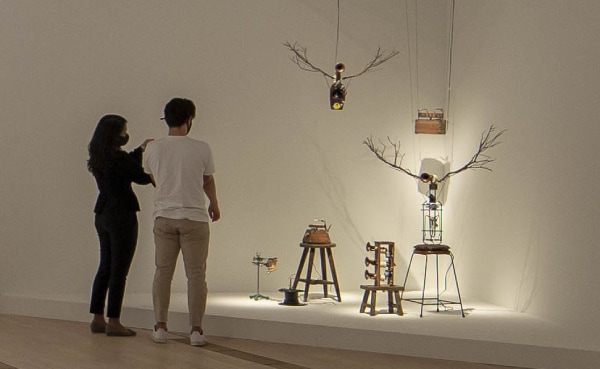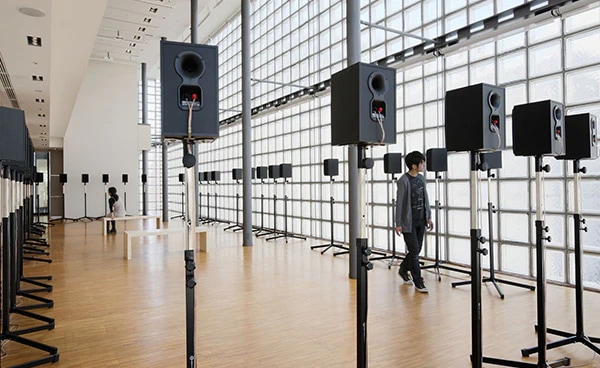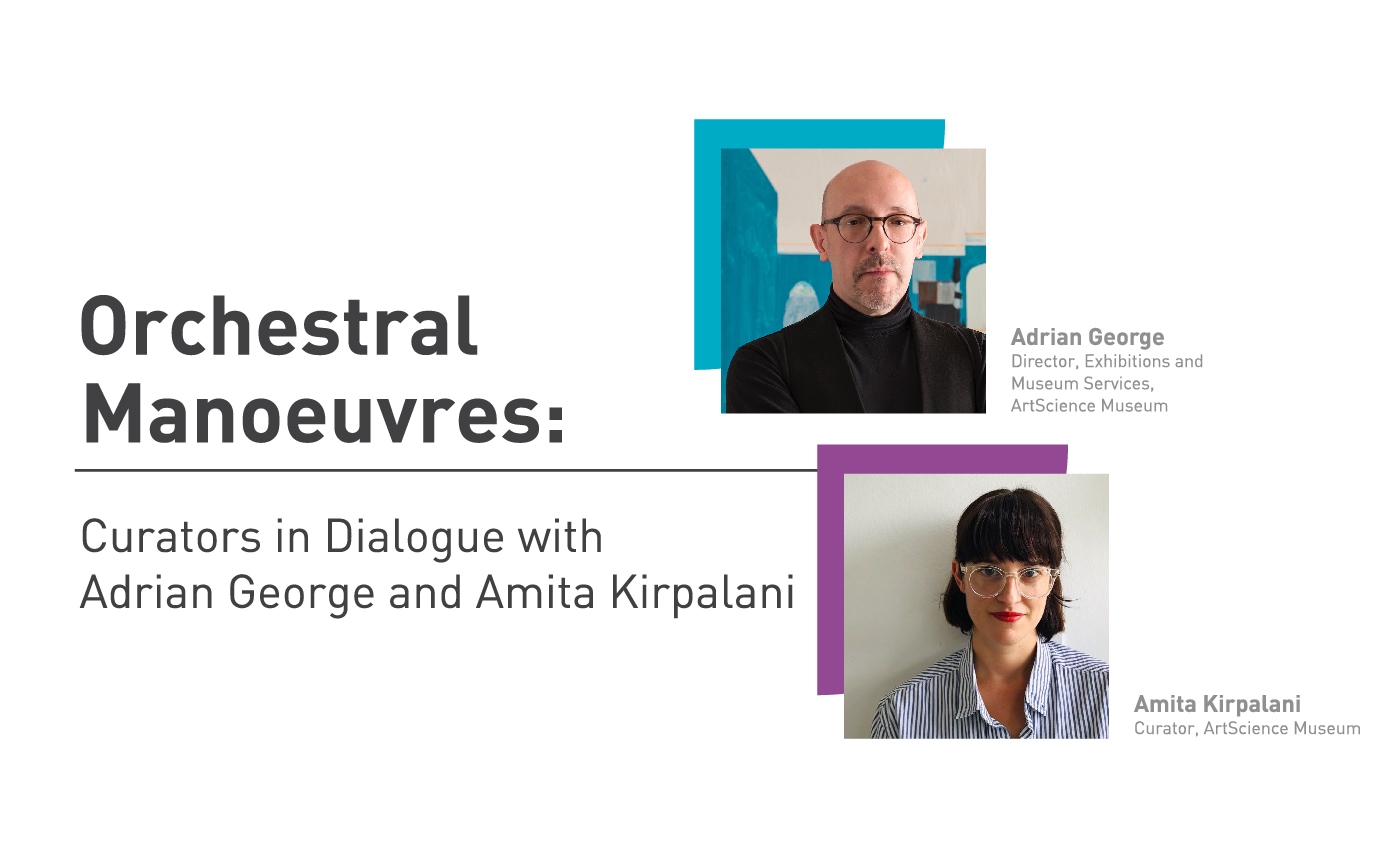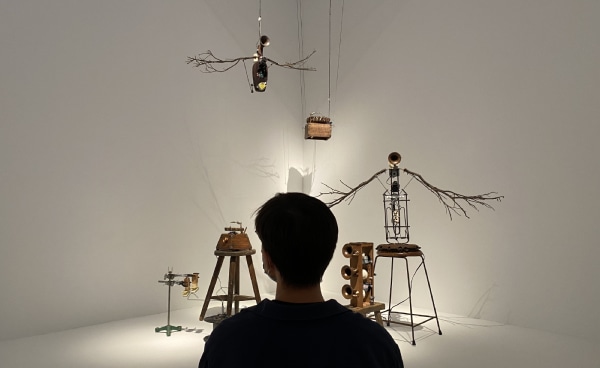Singapore Residents:
Adult: S$16, Child: S$12
Tourists:
Adult: S$19, Child: S$14
Additional ticket options available
en nav_sessionexpired Your session has expired. Please log in again. Confirm
OTP VERIFICATION Select your preferred verification method. Please note that certain countries may have SMS restrictions. If you do not receive an SMS OTP (one-time password), we recommend using email OTP instead. Mobile OTP Email OTP or Try another way VERIFY YOUR MOBILE NUMBER NOW VERIFY YOUR EMAIL ADDRESS NOW An SMS containing a one-time password (OTP) has been sent to your mobile number {#}. An email containing a one-time password (OTP) has been sent to your email address {#}. Your mobile number has been successfully verified. Your email address has been successfully verified. The OTP you have entered is incorrect. Didn't receive OTP? Resend OTP Resend a new OTP in {#} DONE OTP request failed. Please try again later. Duplicate OTP request. Please try again after the existing OTP expires. To verify your account, please complete the hCaptcha below. A one-time password will then be sent to your registered mobile number. To verify your account, please complete the hCaptcha below. A one-time password will then be sent to your registered email address.
15 Your session will expire in Click “Continue” to stay signed in or “Logout” to end your session now. {minute} min {second} sec 2 CONTINUE Log out
Marina Bay Sands Sorry, we are currently unable to connect you to our live chat agent.try again later.Thank you. 30
.jpg)
EXHIBITION
.jpg)
.jpg)
.jpg)
EXHIBITION
Orchestral Manoeuvres is a unique exhibition that presents early Sound Art projects, different types of music scores and noise-making sculptures, through to contemporary projects that use digital, drawn and/or hand-made methods to make an object speak or sing.
The exhibition brings together some of the world’s leading contemporary sound artists whose works encourage us to listen more closely to the spaces we live in or visit. These artists ask us to imagine what music can be and how we might create it ourselves.
Some artists in the exhibition explore silence, you will also encounter singers who don't sing and a choir of people you can't see. This exhibition includes a piano that plays itself and instruments you've never seen or heard before. Try your hand at composing and perhaps take inspiration from famous composers who suggest you throw music around before you try to play it. Whatever journey you take through Orchestral Manoeuvres, music will never sound the same again.
Image caption: Mel Brimfield, 4′ 33″ (Prepared Pianola for Roger Bannister), 2012, sound installation. Courtesy of the artist © Image; Crown Copyright: UK Government Art Collection.
Ticketed Admission
Singapore Residents:
Adult: S$16, Child: S$12
Tourists:
Adult: S$19, Child: S$14
Additional ticket options available









Unlike our eyes, our ears never blink. For most of us, we are always listening, we are swimming through an ocean of sound. Sound is born of vibration. When an object vibrates it creates waveforms in the air around us and this we perceive as sound. Sound waves affect solids, liquids and gases. In this gallery we experience all three.
The sculptural form by artist Hannah Perry carves two lines through the three-dimensional space. It vibrates in response to the deep bass tones played periodically through partially hidden speakers. In turn, the material of the sculpture vibrates and amplifies the sounds. Perry’s artwork is a sculptural expression of resonance -- a word derived from the Latin meaning ‘to resound’, or to simultaneously produce and amplify sound.
Sound waves are made visible as they bounce off materials and unsettle the surfaces of liquids. Carsten Nicolai captures the effect that sound waves have on the surface of a container of milk in 10 deceptively simple photographic prints. Known for his highly complex and technically demanding sound installations, here Nicolai presents us with the bare materiality of sound.
Both artworks offer the visitor different ways of seeing and experiencing sound.
Artists in this exhibition chapter:
Carsten Nicolai (GER), Hannah Perry (UK)

Hannah Perry, Rage Fluids, 2021.
Sound installation.
Courtesy of the artist and Galerie Kandlhofer

Hannah Perry, Rage Fluids, 2021.
Sound installation.
Courtesy of the artist and Galerie Kandlhofer

Carsten Nicolai, Milch (series of 10), 2000.
Courtesy of EIGEN + ART Leipzig/Berlin
American artist Robert Morris was one of the most important conceptual artists associated with the Minimalist movement of the 1950s and 1960s. He often made simple geometric forms -- specifically the cube or box -- as a means of exploring the relationship between the viewer, the object and the architecture of the gallery space.
Artworks like this reveal how, to some extent, the viewer is as much a performer in the gallery as the object. Here Morris makes the object perform. Box with the Sound of Its Own Making (1961) documents and broadcasts the sounds of its own fabrication.
Ashley Zelinskie’s Cube with the Sound of its Own Printing (2014/2021) is an homage to Morris’ work. This 21st century version refers to the machine-made rather than the hand-made, and to the changing role of the artist over time.
Timm Ulrichs’ concrete cube further complicates these ideas. Encased within this concrete cube is a transistor radio, its antenna picking up analogue radio signals. The crackling sounds emanating from Radio (1977/2021) now refer to how few radio stations remain in the age of the digital broadcast and streaming services.
Artists in this exhibition chapter:
Robert Morris (USA), Timm Ulrichs (GER), Ashley Zelinskie (USA)

Ashley Zelinskie, Cube with the Sound of its Own Printing, 2014/2021.
3D printed wood with sound device.
Courtesy of the artist.

The world around us has been the inspiration for sound-making and music since the earliest moments of human existence. In prehistoric cultures primitive instruments were used to mimic animal calls for example. It could easily be argued that the first musical ‘instrument’ was the human body itself -- through our actions and our voices -- the percussive and rhythmic sounds of Stone Age people as they made stone axes, or the diverse range of notes and noises our voices can produce as we communicate with one another.
Sculptures by Chen Zhen and Hsiao Sheng-Chien reference, record or recreate sound-memories, the soundscapes of their childhoods and familiar environments.
Zul Mahmod’s work reveals sound as a connective device in our world, using mechanistic, utilitarian objects to depict sound as a system that we might tune into. Christine Sun Kim doesn’t hear sound but visualises it as lyrical and linguistic musical notation, articulating the world of the unheard through written gestures. Both artists harness the felt rhythms of our world.
Idris Khan’s work is a musical palimpsest. He layers pages of a score, one on top of the other, so that the lines of the piece of music appear to reverberate, like violin strings as they are played. The artwork is a means of containing, complicating and obscuring the musical score.
Artists in this exhibition chapter:
Idris Khan (UK), Christine Sun Kim (USA), Zul Mahmod (SG), Hsiao Sheng-Chien (TW), Chen Zhen (CH)

Chen Zhen (1955-2000) Chair of Concentration, 1999.
© 2021 ADAC – Chen Zhen, courtesy de Sarthe, Hong Kong

Christine Sun Kim, The Sound of Passing Time, 2017.
Courtesy of the artist and WHITE SPACE, BEIJING

The most common way music is shared today is in the form of digital audio files. However, for centuries music was recorded and shared in the form of a written or engraved score: a series of instructions produced for interpretation and re-creation.
Western musical notation’s recognisable five-lined staff or stave was devised in the 9th century, but it is far from the only way to write or notate music. In this gallery you will find a variety of historical and contemporary musical languages, starting with the oldest known score from Ancient Babylon to 14th century Vedic chants, to contemporary American interpretations and experiments with the score or instructions for sound and music.
Mel Brimfield’s 4’ 33” (Prepared Pianola for Roger Bannister), 2012 consists of a pianola, or self-playing piano, an adjacent attached ‘ball-run’ at the rear of the pianola, as well as related prints and wall-texts. The music played by the pianola was specially composed and includes fragments of national anthems, British television sports programmes theme tunes and is a commentary on British athlete Roger Bannister’s performance in the 1952 Helsinki Olympics. Bannister famously trained very little for his middle-distance races, and though he was the favourite he finished in fourth place. Missing out on a medal spurred the athlete on and in 1954 he became the first man to break the once thought impossible, 4-minute mile. Brimfield’s practice relies on second-hand anecdotes and often blends fact and fiction in her re-tellings.
Artists in this exhibition chapter:
Song-Ming Ang (SG/DE), Mel Brimfield (UK), Toshi Ichiyanagi (JP), Yoko Ono (USA), Luigi Russolo (IT) and a series of score from The Schøyen Collection (UK/NO)

Mel Brimfield, 4′ 33″ (Prepared Pianola for Roger Bannister), 2012, sound installation.
Courtesy of the artist © Image; Crown Copyright: UK Government Art Collection.

Mel Brimfield, 4’ 33” (Prepared Pianola for Roger Bannister), 2012, sound installation.
Courtesy of the artist and the Government Art Collection, UK
The sounds around us help us to understand our world, and music also provides another kind of recorded history. We all possess a sonic memory, where for all sorts of reasons some music ‘won’t leave us alone’. The German word Ohrwurm, that means ‘ear worm’, describes a tune or piece of music that is stuck in one's head.
Jeremy Deller’s wall drawing The History of the World (1997 – 2004) maps the historical, political and social confluences between brass band music and acid house. This artwork is another kind of composition and a mind-map of the unique connections Deller sees between different types of music.
Most people report a phenomenon known as the ‘inner voice’ where they ‘hear’ their thoughts, for example when we read silently it seems as though we have a voice in our heads and the same applies when we remember a tune or a piece of music. Peter Weible’s work asks us not consider how the music we choose, or which chooses us, is a reflection of ourselves.
Part of a larger video installation titled the world won’t listen, Phil Collins’ dunia tak akan mendengar was filmed in Indonesia and depicts fans of the British band The Smiths performing karaoke versions of the compilation recording, The World Won’t Listen. This project is indicative of the artist’s extensive research into how popular music culture travels and becomes embedded across cultures. It is also a joyful meditation on the voice, our desire to perform and freedom to do so, regardless of our skill or ability.
Artists in this exhibition chapter:
Phil Collins (DE), Jeremy Deller (UK), Peter Weible (DE)

Jeremy Deller, History of the World, 1997-2004
Wall painting
Dimensions Variable
Courtesy of the Artist and The Modern Institute/ Toby Webster Ltd., Glasgow. Photo: M HKA

Phil Collins, dunia tak akan mendengar, 2007
Part three of the world won’t listen (2004–2007)
Colour video with sound, 56 min.
Courtesy Shady Lane Productions, Berlin
All musical performances are manipulations or interpretations. Performers amplify some sounds and soften or silence others, holding the power to determine what sounds reach the audience. Audio engineering is another way of digitally conducting sound in a performance space or through headphones.
American Minimalist and sound art pioneer, Pauline Oliveros’ work concerns the cognition of sound. Oliveros created Sonic Meditations in 1974 and her work on display is drawn from that short volume, a book of sound exercises or ‘recipes for listening’. This master work proposes new ways for experiencing, producing and collaborating, and in it she states that the work is “intended for group work over a long period of time with regular meetings”, with no special skills necessary. This is music that anyone can make.
Dancing in Peckham (1994) shows the British artist Gillian Wearing dancing in a busy South London shopping centre to a soundtrack she is remembering and we can’t hear. The responses to this impromptu performance from the people who pass by depict the gap between a public and a private experience of music.
Samson Young inverts the sounds of a choral performance. The Hong Kong Voices choir suppress the sound-producing parts of a performance of Bach’s Christmas Oratorio Part 5 (Movement 1, Movements 4/11 Chorales) instead focusing on the breaths they take between what is normally sung. The breath-work of singing is generally obscured by the collective performed experience, but without the sung notes we can gain a better understanding of what is involved in a choral. A secret collective rhythm is revealed: the turning of sheet music, the inhalation and exhalations and the mouthed articulations of lyrics in the music are essential ingredients of a performance and are given centre stage in this artwork.
Artists in this exhibition chapter:
Samson Young (HK), Gillian Wearing (UK), Pauline Oliveros (USA)

Gillian Wearing, Dancing in Peckham, 1994, video.
Production still.
© Image; Crown Copyright: UK Government Art Collection.

Samson Young, Muted Situation #5: Muted Chorus, 2016.
Instruction score, single channel video with sound, 9 min 7 sec. Performed by Hong Kong Voices.
Instances of choral singing can be traced back to ancient Greece, when carefully rehearsed performances were considered cathartic and emotive for performers and listeners alike. Modern research has shown that choral performances and communal singing have a very real impact on the participants, releasing ‘feel good’ chemicals serotonin and dopamine in our brains. Singing with others has been shown to create feelings of community and togetherness, evidenced by the way heartbeats of performers have been known to synchronise.
Canadian artist Janet Cardiff’s combination of technology and a classical performance allows visitors a new way of experiencing a choral performance. Not part of the choir or not being sung at, Cardiff’s work offers the opportunity to be placed literally in the center of the 40 part choir, surrounded by music and song, or to listen an every individual voice.
Artist in this exhibition chapter:
Janet Cardiff (CA)

Janet Cardiff, The Forty Part Motet (A reworking of “Spem in Alium,” by Thomas Tallis 1556), 2001.
Collection of Pamela and Richard Kramlich. Fractional and Promised Gift to The American Fund for the Tate Gallery. Installation view, Fondation d’entreprise Hermès, Tokyo, 2009. Photo by Atsushi Nakamichi / Nacása & Partners Inc. Courtesy of the Fondation d'entreprise Hermès, 2009

Janet Cardiff, The Forty Part Motet (A reworking of “Spem in Alium,” by Thomas Tallis 1556), 2001.
Collection of Pamela and Richard Kramlich. Fractional and Promised Gift to The American Fund for the Tate Gallery. Installation view, ArtScience Museum, Singapore, 2021.
If music is the art of sound, then music’s form and type is only limited by our imaginations. Some of us might find ourselves drawn to making music, perhaps together with others, while there are some of us who are drawn to composing the music we privately dream up.
In this gallery are ‘sound totems’, a composing space, secret sounds, and a stage. Visitors are invited to press the sound totem pedals gently to make them play, and perhaps work together with other visitors to create an impromptu orchestra. Visitors can make their own compositions in the form of graphic music notation. Draw your own shapes to create your own written score, or use the stencils to compose musical ideas and place them on the wall for other visitors to interpret. Explore the colourful shapes on the floor and see what happens when you step in the centre. There is also a stage – The Stage is Yours. Visitors are welcome you to use the piano and/or the theremin, together (but socially distanced) or as a solo performance.
Traces (2015) is German artist Nevin Aladağ’s sound and image portrait of Stuttgart, the city where she spent her childhood. The artist has created a sonic mise-en-scène, where the various instruments she has collected are played by the city, rather than trained musicians. The result is an orchestra of only partially controlled instruments and sounds, where the natural and urban environment serve as both musician and stage.
Beng Tze, director of RAW Art Space in Kuala Lumpur, recognized the importance of the relationship between sound and image, and in a series of events at the gallery brought visual artists and musicians together to improvise and create new work alongside one another in a live performance environment. The documentation shown here is all that remains of what was a very important, but by its very nature, transient moment.
Artists in this exhibition chapter:
Nevin Aladağ (DE) and documentation from the contemporary art gallery and performance space, RAW Art Space, Kuala Lumpur (MY)

Sound Sculptures
Visitors are welcome to press the pedals gently to trigger the sculptures, and are encouraged to use the sculptures as instruments, to be played together with other visitors in the gallery to create a unique impromptu orchestra.

Compose Your Own Graphic Score
Here we encourage visitors to make their own graphic notations – the representation of music through the use of different images and symbols.

Sound Shapes
Step on these colourful shapes on the floor and discover sounds that may be familiar to you. Experience music-making with another visitor to create a symphony of everyday sounds.

The Stage is Yours
This stage is for you, our visitor. We welcome you to use the piano and/or the theremin. In this exhibition, we have explored how music-making can be as simple as tapping your foot. Performing your own composition or ‘covering’ someone else’s can be done in many ways. We encourage you to take the stage and express yourself! Use your own headphones or ask our Visitor Experience staff for a set of headphones to plug in and play.

Nevin Aladağ, Traces, 2015, 3-channel video installation.
Video still © Nevin Aladağ, VG Bild-Kunst. Courtesy of the artist, Wentrup, Berlin and Mangrove Gallery, Shenzhen
Our relationship with music, and our ability to create it, continues to evolve as technology changes the ways in which we interact with, play, collect, contain, manipulate and record sound. It would take many lifetimes to consume the amount of music we can gain access to today through digital means.
American artist Cory Arcangel takes a very serious piece of music by Arnold Schoenberg – an Austrian born composer and music theorist widely considered one of the most influential composers of the 20th century – and playfully recreates it by using a series of clips of ‘cats playing pianos’ that he collected from YouTube. This video collage recreates every atonal note from Schoenberg’s avant-garde masterpiece, a work that eschewed traditional harmony and heralded a radical break with classical form.
Arcangel’s work signals a further evolutionary turn in music-making. We no longer need to be talented or skilled musicians – with the right software we can recreate music and create sounds, we can modulate and change recordings of our own voices, correcting tone and pitch as we feel.
The walls in this gallery display just a few of bars from Schoenberg’s ground-breaking 1909 score. This fragment of Schoenberg’s notation serves as a visual reminder of the experimental work that he was engaged in alongside John Cage and Toshi Ichiyanagi.
The score, in its many representations, deviations, breaches and
derivations and as seen throughout this exhibition, connects art and music history with their many possible futures.
Artists in this exhibition chapter:
Cory Arcangel (USA)

Cory Arcangel, Arnold Schoenberg Op 11 – I-III – Cute Kittens, 2009, 3 YouTube Videos.
© Cory Arcangel. Courtesy of the artist and Lisson Gallery.

Cory Arcangel, Arnold Schoenberg Op 11 – I-III – Cute Kittens, 2009, 3 YouTube Videos.
© Cory Arcangel. Courtesy of the artist and Lisson Gallery. Installation view, ArtScience Museum, 2021.

Sound Sculptures
Visitors are welcome to press the pedals gently to trigger the sculptures, and are encouraged to use the sculptures as instruments, to be played together with other visitors in the gallery to create a unique impromptu orchestra.

Compose Your Own Graphic Score
Here we encourage visitors to make their own graphic notations – the representation of music through the use of different images and symbols.

Sound Shapes
Step on these colourful shapes on the floor and discover sounds that may be familiar to you. Experience music-making with another visitor to create a symphony of everyday sounds.

Auto-Tune

Orchestral Manoeuvres Kid’s Activity Booklet
Explore Orchestral Manoeuvres: See Sound. Feel Sound. Be Sound. in a fun and informative way with the kids’ activity booklet. Discover artworks through a shape hunt by using the clues given to match shapes with artworks found in the exhibition.
Complimentary for children aged between 5 - 9 years old with a ticket purchased for Orchestral Manoeuvres: See Sound. Feel Sound. Be Sound. while stocks last at the Visitor Experience counter, Level 3.

Kids Explore Orchestral Manoeuvres
Explore Orchestral Manoeuvers with our young friends as they interact with the artworks and show you their exhibition highlights!

13 – 24 Nov
Soundislands: Re:Sound
Soundislands: Re:Sound is a two-weekend festival accompanying Orchestral Manoeuvres that embraces different dimensions of sound and different possibilities of listening.

6 Oct, 4 – 5pm
Orchestral Manoeuvres: Curators in Dialogue with Adrian George and Amita Kirpalani
Join the curators of Orchestral Manoeuvres: See Sound. Feel Sound. Be Sound for an in-depth look at the themes and ideas explored in this exhibition that expands how we think about, experience and understand sound.

Kids Explain Sound
What do music and sound mean to you? Listen to a few of our talented little friends as they chime in with their thoughts!

Resonance

Sounds Around

Choral

Auto-Tune

Orchestral Manoeuvres Kid’s Activity Booklet
Explore Orchestral Manoeuvres: See Sound. Feel Sound. Be Sound. in a fun and informative way with the kids’ activity booklet. Discover artworks through a shape hunt by using the clues given to match shapes with artworks found in the exhibition.
Complimentary for children aged between 5 - 9 years old with a ticket purchased for Orchestral Manoeuvres: See Sound. Feel Sound. Be Sound. while stocks last at the Visitor Experience counter, Level 3.






























EXHIBITION
Future World:
Where Art Meets Science
Future World: Where Art Meets Science at ArtScience Museum is currently closed for revamp works. We apologise for any inconvenience caused.
Immerse yourself in a world of art, science, magic and metaphor through a collection of digital interactive installations.
Chat with us